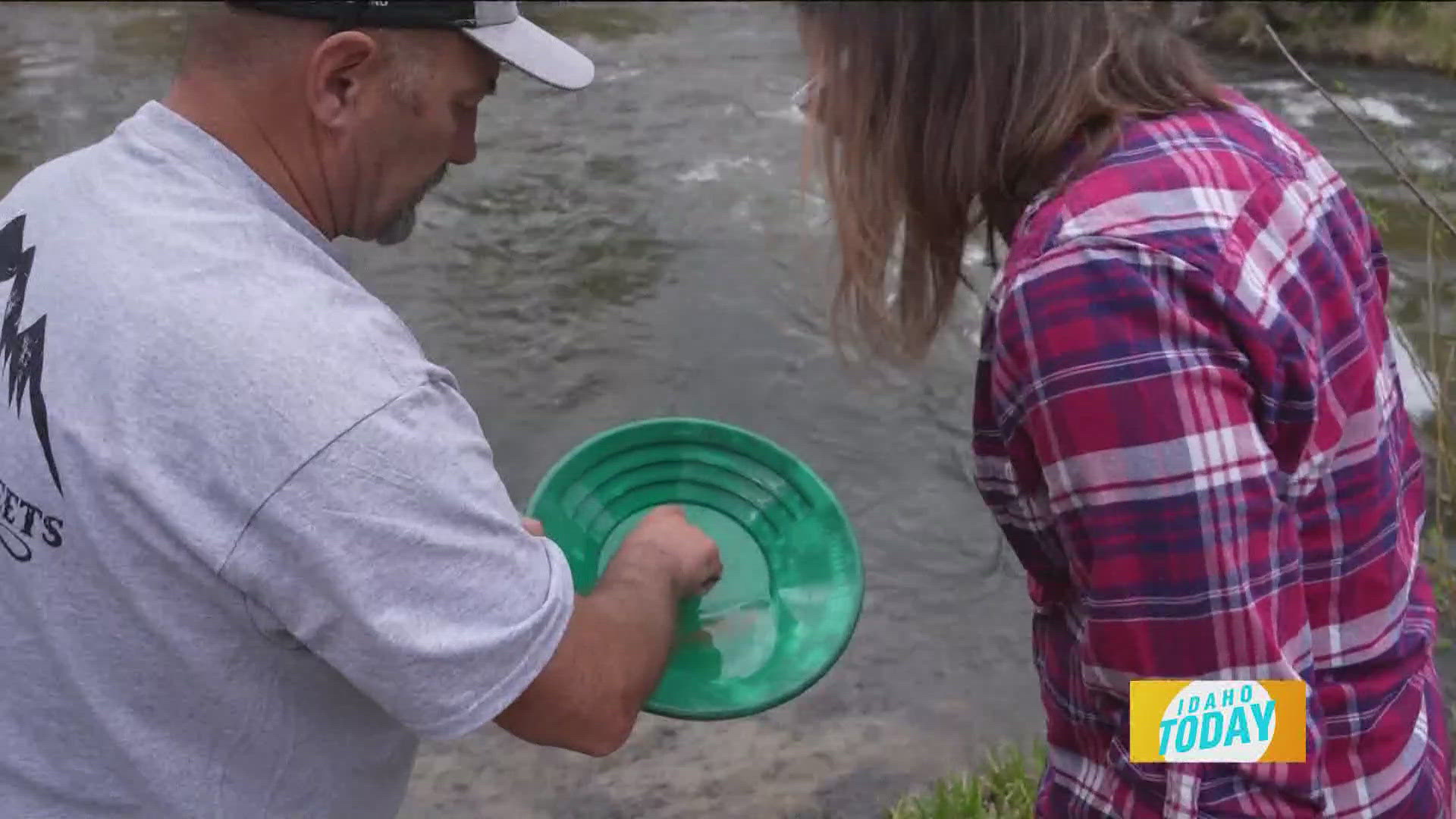Around 1860, prospectors came to Idaho to find gold in the Boise Basin. The bet was solid, and word got out as people came here to stake claims. This Discovery of gold set one of the largest East-to-West migrations in America. U.S. Air Force Veteran Sgt. Over the years, Chris Christman was inspired to buy his claim and connected with Gold Rush star Dave Turin, who has family here in Idaho. The two hosted Idaho Today host Mellisa Paul on a local field trip to show how the premise of Dave's Discovery series, America's Backyard Gold," is 100% on the money-literally!
Idaho is steeped in gold and silver mining lore, some violent and retold in historical dramas on INSP Network's Wild West Chronicles. But the state mountain ranges are eroding over time, and the veins of gold? They are still shedding their minerals and metals into our many rivers, creeks, and streams.
Dave Turin has been with Discovery's hit series, Gold Rush, from the beginning, and the subsequent spin-off series, Gold Rush: Dave Turin's Lost Mine, saw Turin revitalizing old mining operations nationwide. In that series, he heard fascinating stories while he helped people turn fallow mines to produce again. His latest series for Discovery Channel, America's Backyard Gold, sees Dave imparting his lifelong wisdom on people who are sluicing, sniping (diving with a snorkel to find nuggets), and prospecting on land that still has plenty of gold left in it to provide. America's Backyard Gold showed Turin prospecting in Idaho, where average folks can find the best prospecting sites.
Christman told Idaho Today: "It took one trip, and I was hooked. I went out and bought a claim and some mining equipment. What started as a hobby with one mining claim has grown." Christman met Turin by contacting the miners on the original Gold Rush and has also been on Discovery Channel and with Dave Turin; the two educated the Idaho Today team on the how's and laws of novice prospecting in Idaho and even on Idaho's gold history. Lucky for us, the Boise Basin yielded some flakes and grains of gold.
Where to go gold panning in Idaho
Due to time and gravity, Turin notes millions of unclaimed gold at the bottom of lakes, creeks, and rivers; wherever gold has been found before, such as in the Boise Basin, you will likely find gold.
Mores Creek and many others have BLM-managed spots where claims can be purchased, and there are plenty of resources online about the best spots to find gold along a riverbank. Another resource is the Gold Prospectors Association of America, which can direct you to where the panning may actually pan out.
As most of Idaho is public land allowing anyone to pan for gold, you need to mind any posted claim signs that show someone has paid for the mineral rights to that land. Idaho Department of Water Resources has an excellent resource about recreational mining and when you need a permit. Private property is a no-go, and you should always let anyone in your family or friends know where you will be if you venture to remote areas for exploration and scouting, as our beautiful state does have predators, and accidents do happen to people hiking in backcountry areas.
What to bring gold panning
For prospecting, you may wonder what you should bring when you try gold panning near or in Idaho City. Newbies need to get the basics: Quality UV eye protection and waterproof boots, a proper prospecting pan with ridges to collect the heavier gold, and a shovel or heavy-duty hand spade, which is a great start. A vial with a secure top, tweezers, a magnet, an excellent UV-blocking hat that stays on, and some waterproof or resistant gloves are all in a basic kit for a day out to test the waters. If you bring food and drink to the site where you intend to prospect, take all your trash out when you are done.
The unlikely spots where gold collects
After the snow melts and the river runs, the water lines of all our creeks and rivers go up and down; the roots of the grasses and trees near the bank often are catch mats for loose gold. Black sand is another good sign you are panning in the right spot. Look at the rock and gravel formations near bends in the flow of the river or creek. Gold is far heavier than most all these rocks and will collect in these spots, too.
"America's Backyard Gold" is streaming Season One on Discovery+ and MAX.

